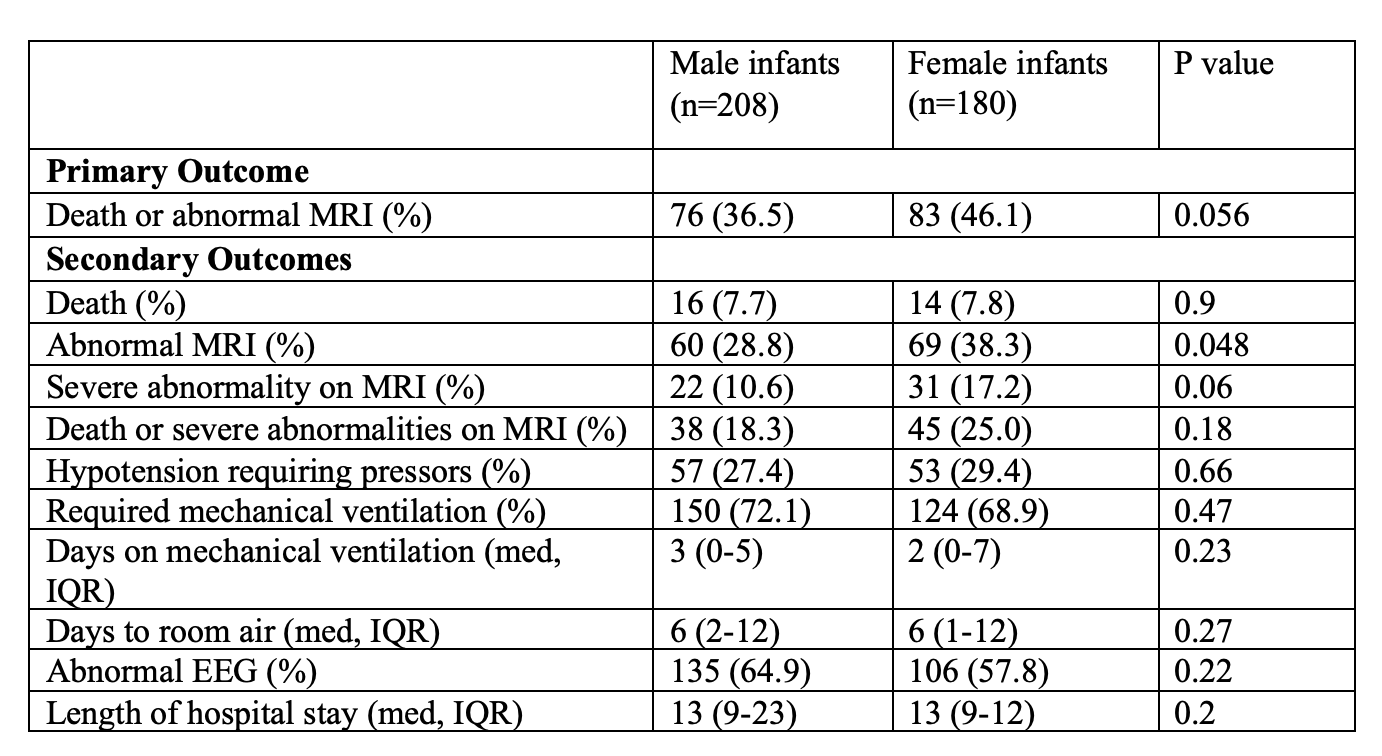Neonatal Neurology: Clinical Research
Neonatal Neurology 2: Clinical 2
165 - Female infants with moderate to severe hypoxic ischemic encephalopathy have higher rates of brain injury on MRI
Publication Number: 165.136
- PM
Priya Mishra, MD (she/her/hers)
Fellow
Sidney Kimmel Medical College at Thomas Jefferson University
Wilmington, Delaware, United States
Presenting Author(s)
Background:
Hypoxic ischemic encephalopathy (HIE) is one of the major causes of mortality and poor neurodevelopmental outcomes in late preterm and full-term infants. It has been reported that male infants are disproportionally more prone to be at risk for HIE associated brain injury and have poor long-term neurodevelopmental outcomes compared to female infants in retrospective studies.
Objective:
To compare effect of sex on brain injury on MRI or death in infants with moderate or severe HIE who received therapeutic hypothermia (TH).
Design/Methods: This is a retrospective single center study of infants born at > 35 weeks of gestation, diagnosed with moderate or severe HIE (modified Sarnat stage 2 or 3) who underwent therapeutic hypothermia. A neuroradiologist blinded to clinical severity scored severity of brain injury using the basal ganglia/watershed (BG/W) scoring system. Primary outcome of a composite of death or brain injury on MRI was compared between male and female infants. Secondary outcomes included rate of death, abnormality on brain MRI, severe abnormality on brain MRI and length of stay.
Results: 388 infants met the inclusion criteria. Of those, 180 (46.4%) infants were female, and 208 (53.6%) infants were male. Demographic and baseline characteristics were similar in both groups (Table 1). The incidence of death or abnormal MRI findings was higher in females compared to males but did not reach statistical significance (46.1% in females vs 36.5% in males, p= 0.056). However, incidence of abnormality on brain MRI was significantly higher in females compared to males (38.3% vs 28.8%, p= 0.048). There was also a trend towards higher rate of severe brain abnormalities on MRI in females compared to males (17.2% vs 10.6%, p= 0.06). There were no significant differences between the groups in terms of length of stay, hypotension requiring vasopressors, requirement and length of mechanical ventilation, rate of EEG abnormalities.
Conclusion(s): Moderate to severe HIE was more common in male compared to female infants. Contrary to previous studies, there was higher incidence of abnormalities on brain MRI amongst female infants with moderate to severe HIE who received TH compared to males. .png)

